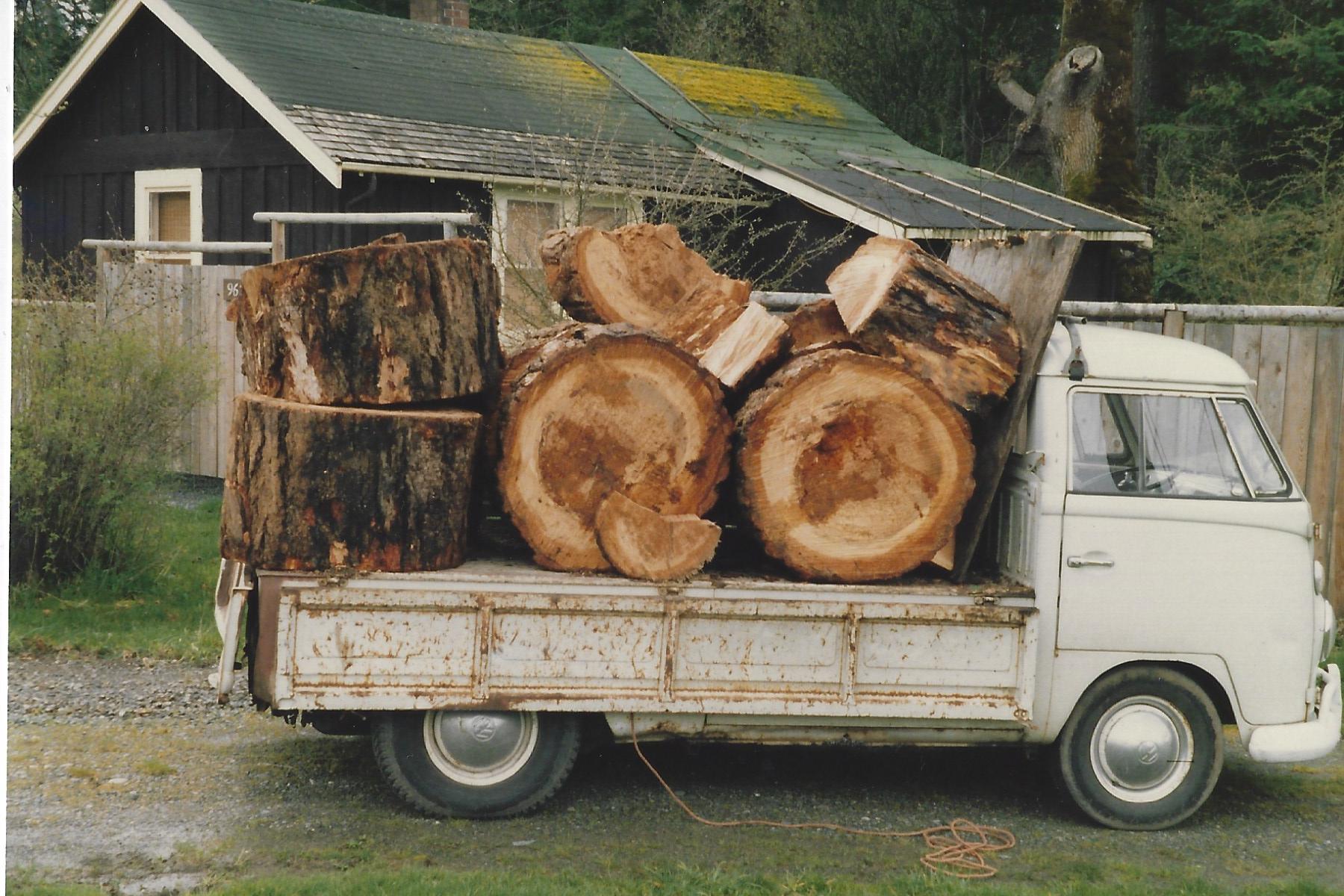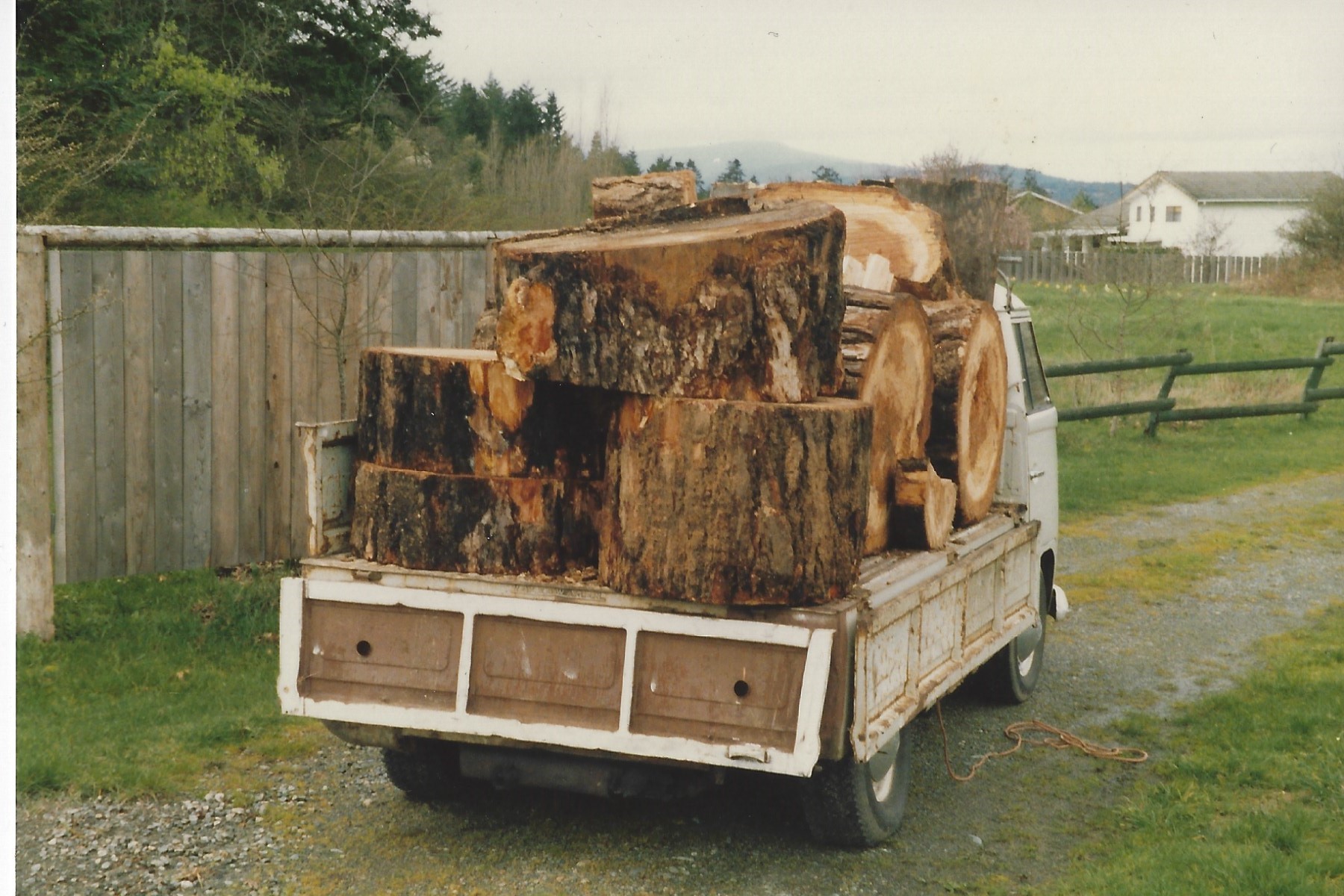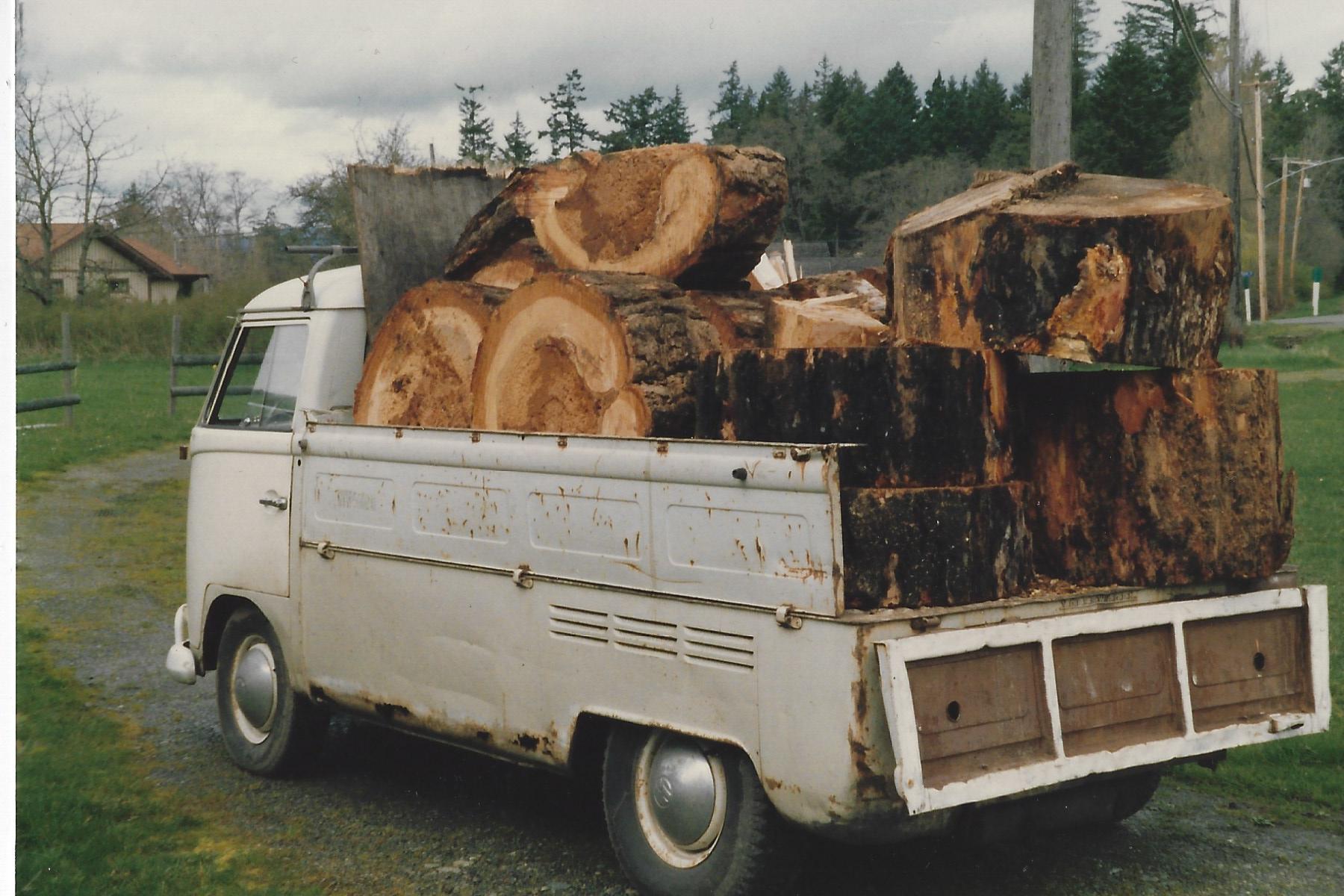But yet you can tell someone they suck in certain conditions and they look at you like you have ten heads because everyone thinks tracks are the solution to everything. Everything has its pros and consI did the same thing out on the farm. Went back to a tired skid loader last time. Lot of things I like about the tracked ones but when mud snow and ice comes it sure nice to threw a set of chains on the wheeled ones and go. One year with the tracked one we had a ice storm and I was stuck in my own drive way had to get the tractor out to pull it to the shed.
You are using an out of date browser. It may not display this or other websites correctly.
You should upgrade or use an alternative browser.
You should upgrade or use an alternative browser.
Firewood...The Most Important Piece of Equipment
- Thread starter Woodcutteranon
- Start date

Help Support Arborist Forum:
This site may earn a commission from merchant affiliate
links, including eBay, Amazon, and others.
But yet you can tell someone they suck in certain conditions and they look at you like you have ten heads because everyone thinks tracks are the solution to everything. Everything has its pros and cons
The reason I asked the question is we had a skid steer that had wheels and we used steel tracks that we could put on and take off depending on how wet it was. The steel tracks worked great in the mud but tore up the ground real bad. Loading the skid steer on the low boy was tricky with steel tracks and if they were muddy or wet. It would slid sideways if you were not perfectly level and even when it was level you really had to be careful or it would slid sideways off the lowboy.
We even welded angle iron and expanded sheet metal on the ramp of the lowboy to get better traction because it would not climb the ramp with wet tracks and we couldn't even get it loaded on the trailer. But they worked great in the mud.
We were using an Optimal tree spade and even if we did get stuck because of high center we could use the Optimal to push your way out. We had a bucket and we could use that a little bit to push our way out but it's range of movement was limited compared to the Optimal tree spade. If it was really wet we would end up pushing the dirt instead of pushing the loader and then we were stuck.
Seems to me steel tracks would work better in snow or ice but we never get that down here.
Yes the rubber tracks work good in the mud. The ones that come on the cat skid steers that have straight bars across them seem to work the best. The ones that look like mini exscavator tracks are ok but not as good.The reason I asked the question is we had a skid steer that had wheels and we used steel tracks that we could put on and take off depending on how wet it was. The steel tracks worked great in the mud but tore up the ground real bad. Loading the skid steer on the low boy was tricky with steel tracks and if they were muddy or wet. It would slid sideways if you were not perfectly level and even when it was level you really had to be careful or it would slid sideways off the lowboy.
We even welded angle iron and expanded sheet metal on the ramp of the lowboy to get better traction because it would not climb the ramp with wet tracks and we couldn't even get it loaded on the trailer. But they worked great in the mud.
We were using an Optimal tree spade and even if we did get stuck because of high center we could use the Optimal to push your way out. We had a bucket and we could use that a little bit to push our way out but it's range of movement was limited compared to the Optimal tree spade. If it was really wet we would end up pushing the dirt instead of pushing the loader and then we were stuck.
Seems to me steel tracks would work better in snow or ice but we never get that down here.
gdrew888
ArboristSite Operative
I wasn't in the firewood business like some of you guys, this is just a load for personal use. I'll let the pictures do the talking, suffice to say that load was soaking wet mill ends that were free to me. I have a friend who made plywood for a living, back in the early 80's.






Ryan'smilling
Addicted to ArboristSite
I wasn't in the firewood business like some of you guys, this is just a load for personal use. I'll let the pictures do the talking, suffice to say that load was soaking wet mill ends that were free to me. I have a friend who made plywood for a living, back in the early 80's.



Awesome.
I want the hauling rig!

$59.99 ($0.40 / Foot)
$69.99 ($0.47 / Foot)
Arborist Rigging Rope Bull Rope Black (1/2 in x 150ft) Polyester Braided Arborist Rope 48 Strands for Tree Work Camping or Swinging…
UIERTIO

$79.99
ZELARMAN Chainsaw Chaps 8-layer Protective Apron Wrap Adjustable Chainsaw Pants/Chap for Loggers Forest Workers Class A
QUALITY GARDEN & HAND TOOLS

$337.83
$369.99
WEN Electric Log Splitter, 6.5-Ton Capacity with Portable Stand (56208)
Amazon.com

$37.99 ($0.38 / Foot)
$40.99 ($0.41 / Foot)
Arborist Rope Climbing Rope Swing for Tree(1/2in x 100ft) Logging Rope 48 Strands for Pull, Swing, Knot (Orange)
SDFJKLDI

$225.16
OREGON 295397 Type C (All Round Yukon Chainsaw Protective Trouser, Black, Small
Express Shipping ⭐⭐⭐⭐⭐

$17.99
$19.99
Extendable Pole Saw Branch Trimmer Pruner Head for Tree Trimming Pruning
FENGLICNSAOMV

$19.99 ($3.33 / Count)
Firewood Log Splitter 45mm+32mm + 4 Handles (Square + Round + Hex Shank + Small Hex) Wood Log Splitter Easy Splitter Detachable Drill Bit Heavy Duty Electric Drills Screw Cone Driver Removable
JianShiMoQinDianZiShangWuYouXianGongSi

$59.99 ($0.40 / Foot)
$69.79 ($0.47 / Foot)
Arborist Rigging Rope 1/2 in x 150 Ft Blue Bull Rope Polyester Braided Arborist Rope 1/2 inch 48 Strands 150 Feet for Various Outdoor Applications Construction Climbing Swing Sailing
Glfcai store

$194.26
Oregon Yukon Chainsaw Safety Protective Bib & Braces Trousers - Type A Protection, Dark Grey, Large
Express Shipping ⭐⭐⭐⭐⭐
Love the rig. Wouldn't make it up my driveway loaded like thatI wasn't in the firewood business like some of you guys, this is just a load for personal use. I'll let the pictures do the talking, suffice to say that load was soaking wet mill ends that were free to me. I have a friend who made plywood for a living, back in the early 80's.



Rjpoog1989
ArboristSite Member
It depends on where the wood is. If it’s on my property, my John Deere is irreplaceable. If it’s somewhere else, I’ve gotta have my dump trailer. I’ve tried hauling wood in my truck bed, did it for 3 years actually, but my truck is one of them grocery getters so it’s not ideal.
Attachments
tnflatbed
ArboristSite Operative
That is a super nice looking dump trailer!, What brand is it?
That is a super nice looking dump trailer!, What brand is it?
K-Trail makes it. I got the last one made with 3 foot sides. There may be some old stock still on dealer lots. The mesh sides are an option. Now they make them with 2 foot sides, or maybe its 30 inches. Can't remember.
3 full cord delivery, '07 Silverado 3500HD Duramax with dump bed, and a 14x7 galv dump trailer. About the most efficient setup I can afford at this time. Anything bigger and we're getting into mid sized dump trucks.
View attachment 792131
Your set up looks awesome to me. My first truck was a C600 when I did not even have a license to drive. That was almost 40 years ago. I think my legal limit is 40,000 LBS. Our highway patrol stated its not how big the truck is or how much it can handle or the Gross Combination. but how fast can you stop. The trailer has six 12'' brakes and still struggles down a long hill. Yes we have hills. I would likely never use a dump trailer because they are so heavy. Those that do not have hills seem to breeze along. Thanks
Your set up looks awesome to me. My first truck was a C600 when I did not even have a license to drive. That was almost 40 years ago. I think my legal limit is 40,000 LBS. Our highway patrol stated its not how big the truck is or how much it can handle or the Gross Combination. but how fast can you stop. The trailer has six 12'' brakes and still struggles down a long hill. Yes we have hills. I would likely never use a dump trailer because they are so heavy. Those that do not have hills seem to breeze along. Thanks
Some trailers have breaks some don't. Most only have breaks on one axle if its a tandem axle trailer. Most single axle trailers don't have breaks at all. My tandem axle trailer only came with breaks on the front axle. I added new drum hubs and breaks on the rear axle so mine has breaks on both axles. I was a trucker for 30 years and most new trucks have plenty of power to get even a heavy load moving at highway speeds unless your pulling grades. And you are correct, it's not that your truck can pull the weight, but how well it can stop it. We have all topped a hill and seen nothing but break lights as far as you can see. Many roads don't have emergency lanes or have K rails blocking you from moving over into an emergency lane so you have no where to go if you can't stop. Pulling is one thing, stopping is another and far more important. Also most trailers that do have breaks are not self adjusting, so you need to manually adjust them periodically.
Also you must have a GOOD quality break controller and learn how to use it properly. A 50 dollar break controller is not going to work as well as a 350 dollar controller.
The cheap break controllers work off your break light circuit and suck when your in stop and go traffic.
The better ones have speed sensors and a mercury switch and G force sensors and adjustments for how hard you engage and how fast they engage. Most cheap controllers only have zero through 10 in increments of 1/10.
Mine has 1/10 but has increments of 10 on each number setting. So I can set it at 1.1 or 1.2 or 1.3 and so on all the way up to 10. And it has an emergency lever or panic lever that will instantly go from zero to full lock with a simple lever. Once you come to a stop, if you have a cheap controller as long as the break light is lit, like if you holding your foot on the break at a stop light, the trailer breaks are fully engaged. Mine has a sensor so once your stopped it backs the break power down to a minimal amount.
Say I have it set at 5.5 and when I hit the breaks it goes to 5.5 till you start slowing down then it slowly starts backing the breaking power according to your relative speed. Once I'm stopped at a light it drops the breaking power sent to the trailer breaks down to 1.5 while your sitting still, even though you have your foot on the break and your truck break lights are on.
The cheap one's you have to take your foot off the break and let the break light go off before the trailer breaks will release.And that can be very annoying in stop and go traffic.
The good break controllers are worth every penny because they give you much more control and more adjustments to fit your breaking needs. You can dial it in to do exactly what you want and need over your trailer breaks. I can adjust mine to stop hard by the G force the mercury sensor picks up and it will go to that setting. But it also has a delay from instant breaking to 1 second or 2 seconds up to 3 seconds after you hit the breaks.
The good ones work much better then the cheap ones do. Mine even has LED light that tell you if your breaks are connected and are working, right on the controller module. If one or more of those indicator LEDs stops working or starts flashing, I know a light is out or there is a problem. Lastly, make sure you have a secondary detected ground wire from the trailer to the frame of your tow vehicle. Most ground through the ball hitch and if you don't have a good ground, it's not going to work properly or at all.
If you have break or light issues, always check the ground first. Thats is where most issues come from, not having a good ground.
Also change your incandescent lights to all LED's. Most light bulb failures come from the light filaments getting broken on bumpy roads. LED's last longer and don't break the filaments and work much better.
If you can afford them, get self adjusting trailer breaks. It's a pain in the ass to crawl under a low trailer and try to adjust the breaks.Especially if it's wet or muddy. Don't forget to check your break away switch and battery and make sure they are in working order.
Right you are. Its all about stopping. hence the reason not to exceed the GVWR for the truck, or the GCWR if towing something as well.Your set up looks awesome to me. My first truck was a C600 when I did not even have a license to drive. That was almost 40 years ago. I think my legal limit is 40,000 LBS. Our highway patrol stated its not how big the truck is or how much it can handle or the Gross Combination. but how fast can you stop. The trailer has six 12'' brakes and still struggles down a long hill. Yes we have hills. I would likely never use a dump trailer because they are so heavy. Those that do not have hills seem to breeze along. Thanks
More photos please.
- Joined
- Jan 14, 2002
- Messages
- 4,800
- Reaction score
- 12,596
- Location
- North of Goderich, Ontario, Canada
Sandhill Crane, click on his page under his name. https://woodchuckcanuck.com/ Fair warning though Jim and his wife have some pretty neat stuff, you're going to be there awhile.
It's spelled BRAKES.
Wow...
Similar threads
- Replies
- 0
- Views
- 295
- Replies
- 28
- Views
- 3K






































